Making the Elgin Grade 55
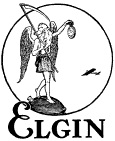
Making the Elgin Grade 55 |

|
|
The Elgin grade 55 watch comes in a number of variations. This one is a J. T. Ryerson, serial number 250824. It was made in 1874 and is an 18 size, 7 jewel watch. The watch is key-wind and key-set. This particular model is also a "slow beat" watch (4.5 bps), giving it a distinctive sound. Let's take it apart... |
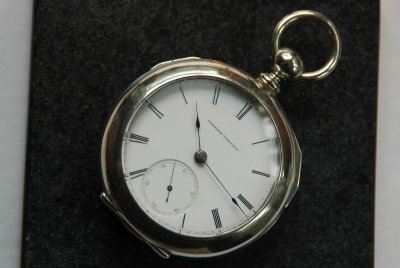
|
|||
|
This type of watch is held in its case by a single case screw. The movement has a small pin at the top, about opposite the screw, which positions and holds the movement in the case. Removing the movement, we get a good look at the hand painted dial and blued hands. Note that this watch, being an older Elgin, is marker "National Watch Co" and not "Elgin". "The National Watch Company" was the original name of the company when it was founded in 1865. |
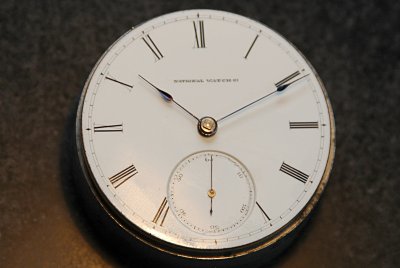
|
|||
|
The dial feet are pinned on this grade 55. Instead of having dial foot screws, three brass pins are inserted through the three posts that stick through the bottom plate. I find one of the pins is missing and the others are a little too narrow to be secure. I'll replace the pins with new ones. We see here the removed dial, the hands and the three dial foot pins. |
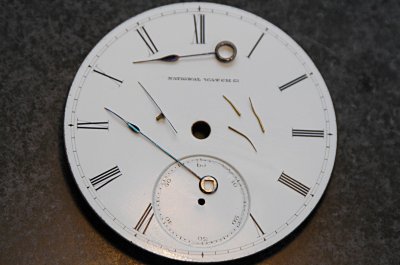
|
|||
|
The dial side of the bottom plate has a cover held in place with two screws. The rachet is under this plate. We can also see here the minute and hour wheels and the square top of the cannon pinion. This is where a watch key fits when setting the time. |
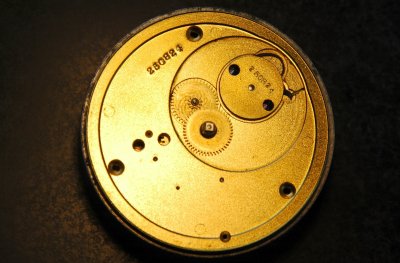
|
|||
|
The rachet consists of a click and a heavy spring holding the click to a shark-toothed wheel. The rachet wheel sits on a square pivot extending out of the main spring barel above. Note that the rachet parts are nicely blued on this watch. |
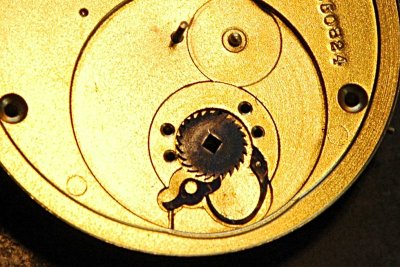
|
|||
|
Turning to the top side we see that this watch features a solid balance wheel, unusual for Elgin, but the polished balance, the blued screws, and the gilded plates give a very pleasing appearance. The J. T. Ryerson engraving is also visible in this photo. Joseph Ryerson was one of the original directors of the Elgin company. Elgin used the names of important individuals on higher grade (more expensive) movements. The movement probably cost about $60 when it was new, no small sum, especially in the economic downturn that followed the Civil War. |
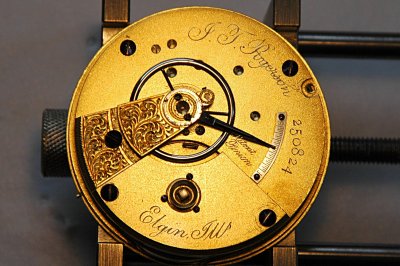
|
|||
|
Here we have removed the balance bridge. |
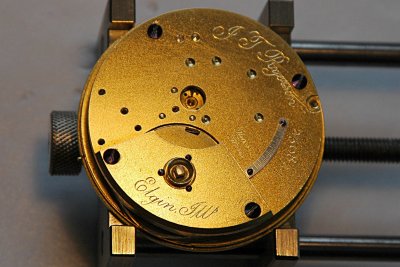
|
|||
|
Here we get a close look at balance bridge and the balance assembly. The jewels have been removed as well. The jewel screws, also blued, are among the smallest screws in the watch. I've found out of the regulator pins missing and replaced it with a new one. |

|
|||
|
The bridge holding the main spring barel in place is removed next, and then the barel itself. |
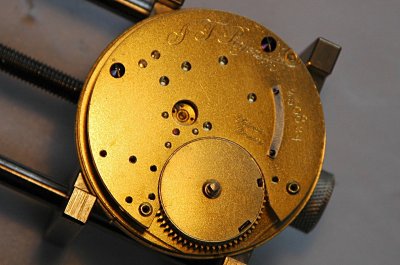
|
|||
|
This is a three quarter plate watch. A single upper plate covers about 3/4s of the movement. |
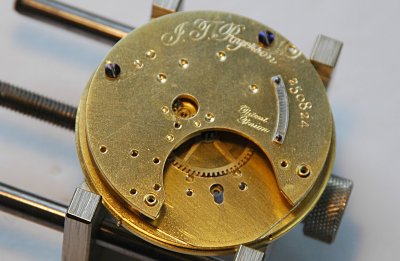
|
|||
|
Now we get a good look at the train. This Elgin has an English style lever escapement. Later, Elgin switched to Swiss style levers, even in the larger watches like this 18 size. |
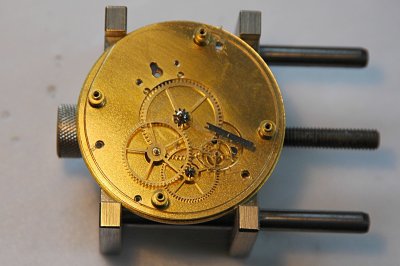
|
|||
|
The English lever features pallet jewels (rubies in this watch) fixed to the side of the lever facing the escape wheel, rather than arranged in a fork at the end of the lever. |
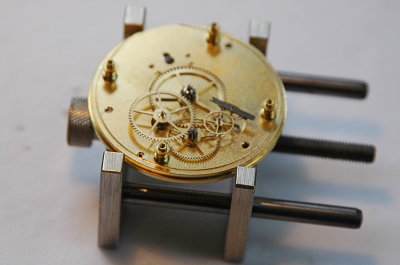
|
|||
|
I find the wheels in this watch to be of especially high quality. They are all gold plated and have extra stout bodies and pinions. |
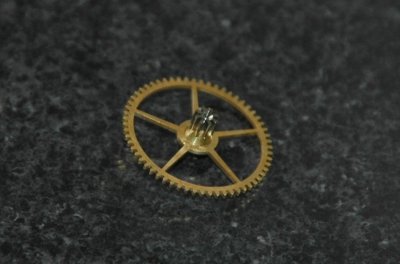
|
|||
|
Here's the Elgin completely taken down and cleaned. The jewels have been cleaned and reinstalled. Next the watch is reassembled, properly oiled, adjusted for reasonable time keeping and recased. I find this one to be doing just fine. |
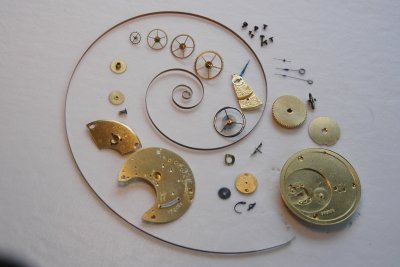
|
|||
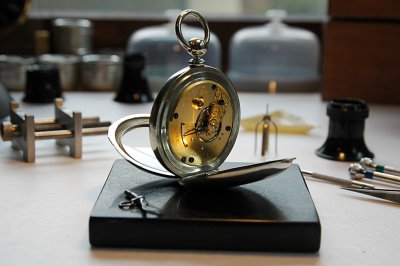
|
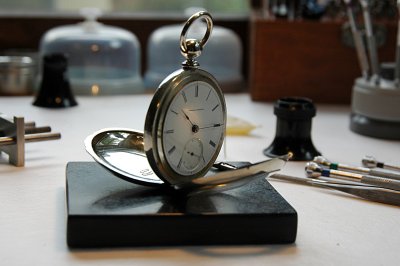
|

|
|
||
|
|
|||
Comments to jsexton@elgintime.com